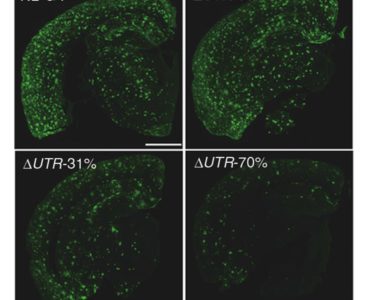Researchers from an international collaboration have succeeded in creating a “protein cage”—a nanoscale structure that could be used to deliver drugs to specific places of the body—that can be readily assembled and disassembled but that is also extremely durable, withstanding boiling and other extreme conditions. They did this by exploring geometries not found in nature,…
Photoreactions Trigger Magnetic Nanoswitches
A way to use light to induce changes in the optical and magnetic properties of water-dispersed titanate nanosheets has been devised by RIKEN researchers1. This opens up opportunities for using liquid crystals based on two-dimensional (2D) materials in smart optical devices. The properties of liquid crystals lie somewhere between those of solids and liquids. For…
Hybrid Qubits Solve Key Hurdle to Quantum Computing
Spin-based quantum computers have the potential to tackle difficult mathematical problems that cannot be solved using ordinary computers, but many problems remain in making these machines scalable. Now, an international group of researchers led by the RIKEN Center for Emergent Matter Science have crafted a new architecture for quantum computing. By constructing a hybrid device…
Smarter AI: Machine Learning Without Negative Data
A research team from the RIKEN Center for Advanced Intelligence Project (AIP) has successfully developed a new method for machine learning that allows an AI to make classifications without what is known as “negative data,” a finding which could lead to wider application to a variety of classification tasks. Classifying things is critical for our…
Smarter AI — Machine Learning Without Negative Data
A research team from the RIKEN Center for Advanced Intelligence Project (AIP) has successfully developed a new method for machine learning that allows an AI to make classifications without what is known as “negative data,” a finding which could lead to wider application to a variety of classification tasks. Classifying things is critical for our…
New Insulating State Discovered in Stretched Graphene
By using the powerful K supercomputer to simulate with unprecedented accuracy what happens to graphene as it is stretched, RIKEN researchers have discovered a new state of the material (Physical Review Letters, “Correlation-driven dimerization and topological gap opening in isotropically strained graphene”). This finding suggests new device applications for graphene. Graphene is a single layer…
Sun-powered Heart Monitor Adheres to the Skin
Scientists have developed a human-friendly, ultra-flexible organic sensor powered by sunlight, which acts as a self-powered heart monitor. Previously, they developed a flexible photovoltaic cell that could be incorporated into textiles. In this study, they directly integrated a sensory device, called an organic electrochemical transistor — a type of electronic device that can be used…
Diagnostics at Your Fingertips Thanks to Ultrathin Organic Photodetectors
A plastic film that is thinner than a human hair and can be bent thousands of times without disrupting its ability to detect light has been developed by RIKEN researchers (Advanced Materials, “Ultraflexible near-infrared organic photodetectors for conformal photoplethysmogram sensors”). They demonstrated its potential for on-skin medical diagnostics by attaching it to the fingertips and…
Using the K Computer, Scientists Predict Exotic “di-Omega” Particle
Based on complex simulations of quantum chromodynamics performed using the K computer, one of the most powerful computers in the world, the HAL QCD Collaboration, made up of scientists from the RIKEN Nishina Center for Accelerator-based Science and the RIKEN Interdisciplinary Theoretical and Mathematical Sciences (iTHEMS) program, together with colleagues from a number of universities,…
Using the K Computer, Scientists Predict Exotic “Di-Omega” Particle
Based on complex simulations of quantum chromodynamics performed using the K computer, one of the most powerful computers in the world, the HAL QCD Collaboration, made up of scientists from the RIKEN Nishina Center for Accelerator-based Science and the RIKEN Interdisciplinary Theoretical and Mathematical Sciences (iTHEMS) program, together with colleagues from a number of universities,…
Mutation Discovered to Protect Against Alzheimer’s Disease in Mice
Researchers at the RIKEN Center for Brain Science have discovered a mutation that can protect against Alzheimer’s disease in mice. Published in the scientific journal Nature Communications, the study found that a specific mutation can reduce the characteristic accumulation of the amyloid-beta peptide that occurs. Most of us are aware of the mental and behavioral changes…
Scientists Use Supercomputer to Accurately Model the Microphysics of Clouds
Sturdy Skyrmions Offer Computing Power
Tiny swirling magnetic patterns called skyrmions can pack together to form neat lattices inside certain magnetic materials. These lattices are promising for spintronics — a new form of computing that exploits the magnetic characteristics of atoms to manage data. But their usefulness is limited because they typically exist only within a narrow window of temperatures…










